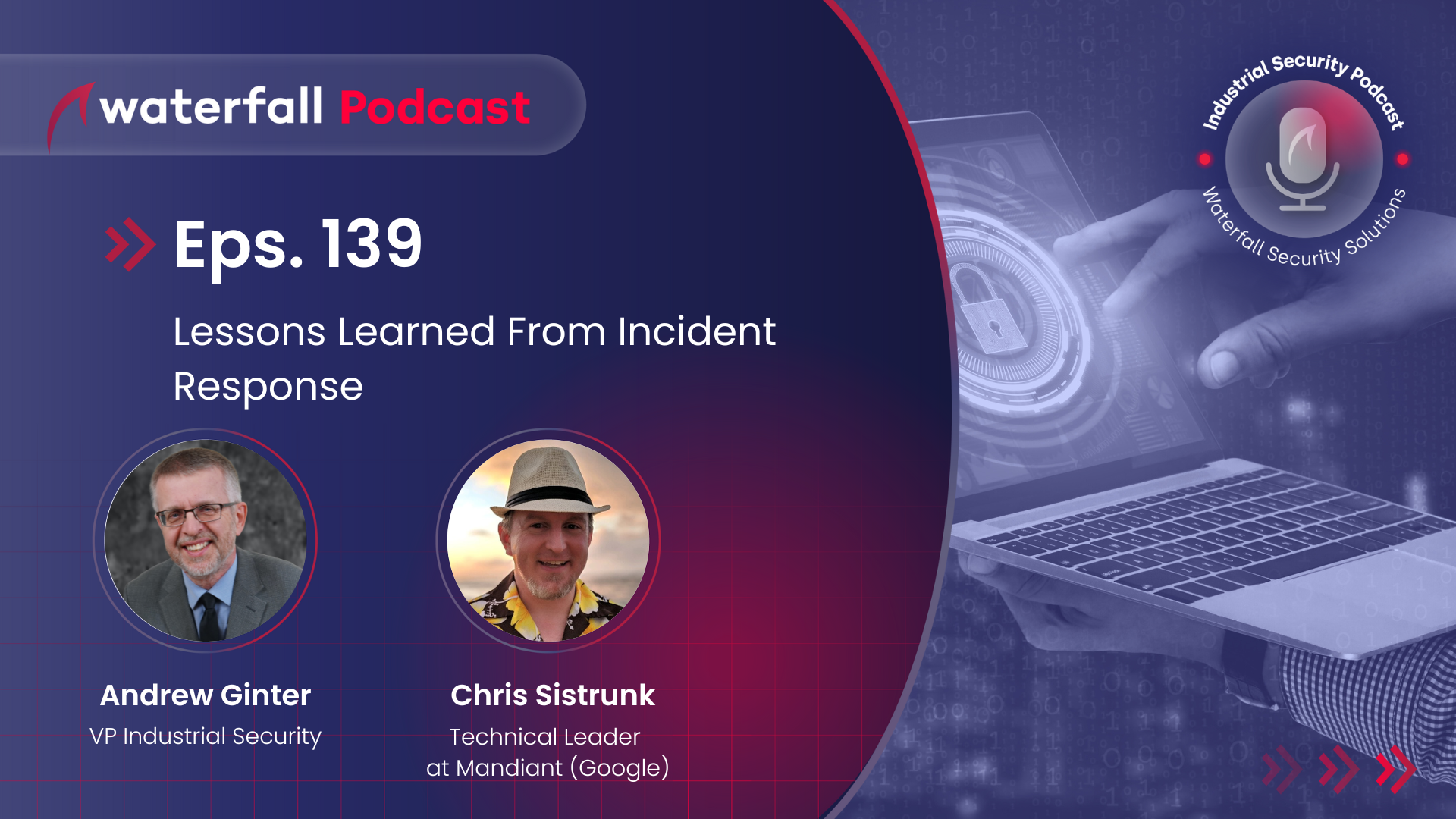
Lessons Learned From Incident Response – Episode 139
Tune in to ‘Lessons Learned From Incident Response’, the latest episode of Waterfall Security’s OT cybersecurity Podcast.
Welcome to the resources page! We have compiled a collection of useful information, tools, and resources to help you

Tune in to ‘Lessons Learned From Incident Response’, the latest episode of Waterfall Security’s OT cybersecurity Podcast.
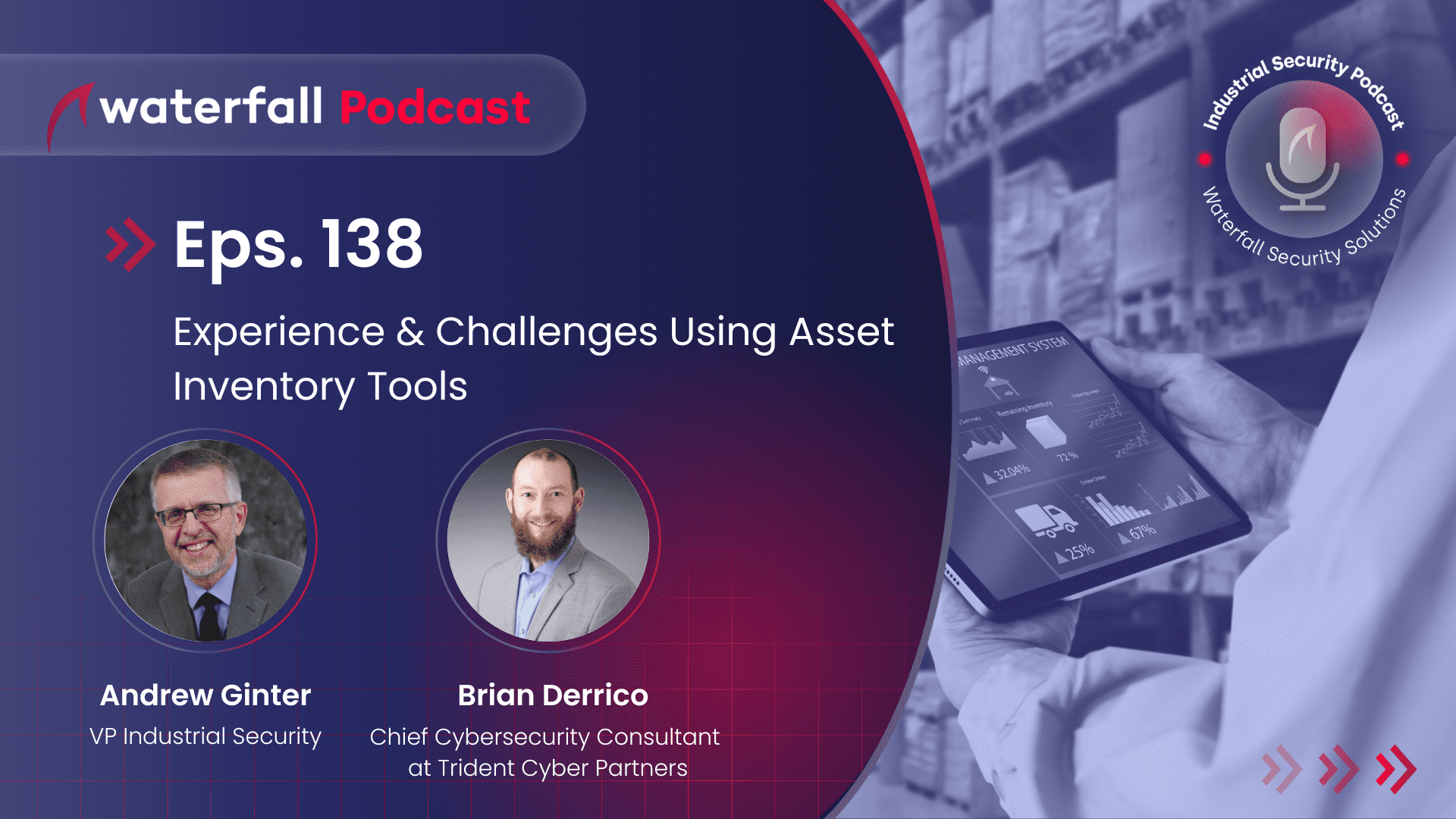
In this episode, Brian Derrico of Trident Cyber Partners walks us through what it’s like to use inventory tools – different kinds of tools in different environments – which have become almost ubiquitous as main offerings or add-ons to OT security solutions.
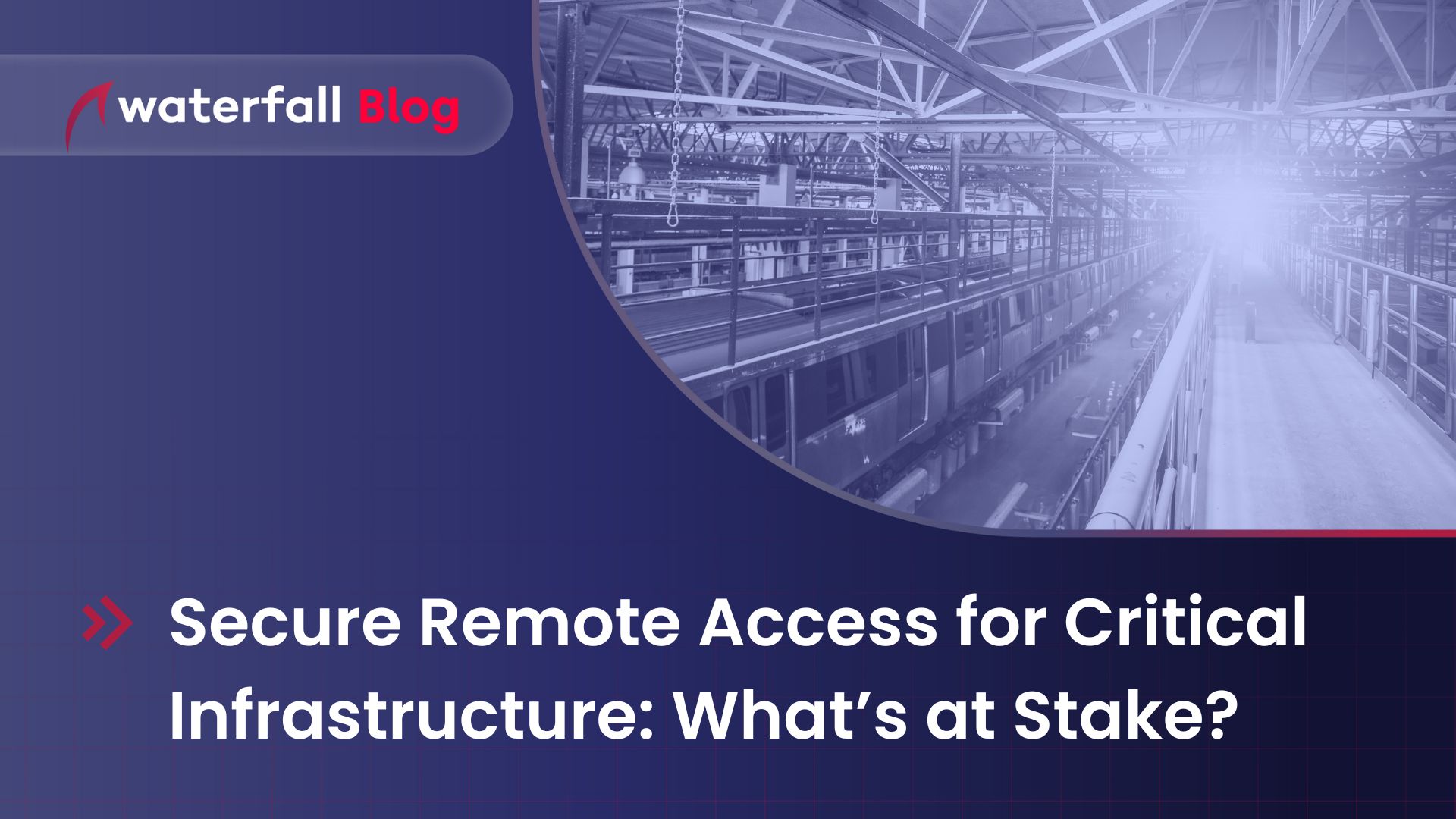
One of the most significant vulnerabilities when it comes to OT security for critical infrastructure are the risks posed by the use of remote access into OT.

Get up to speed on key trends and strategies in industrial security with Andrew Ginter’s favorite webinars of 2024,

Sit back and enjoy Andrew Ginter’s top 3 picks from 2024’s Industrial Security Podcast series.

Spoiler Alert: Yes, investing in OT security is very much “worth it”. It helps prevent financial losses, operational disruptions, and compliance penalties far exceeding initial costs. The average ROI can reach up to 400%, ensuring both protection and operational continuity.

Power generation is a critical sector facing unique cybersecurity challenges. However, as I researched, it became clear that no document existed to bridge the gap between the general, industry-agnostic ISA/IEC 62443 standards and the specific needs of power generation facilities. In response, I decided to write this ebook.
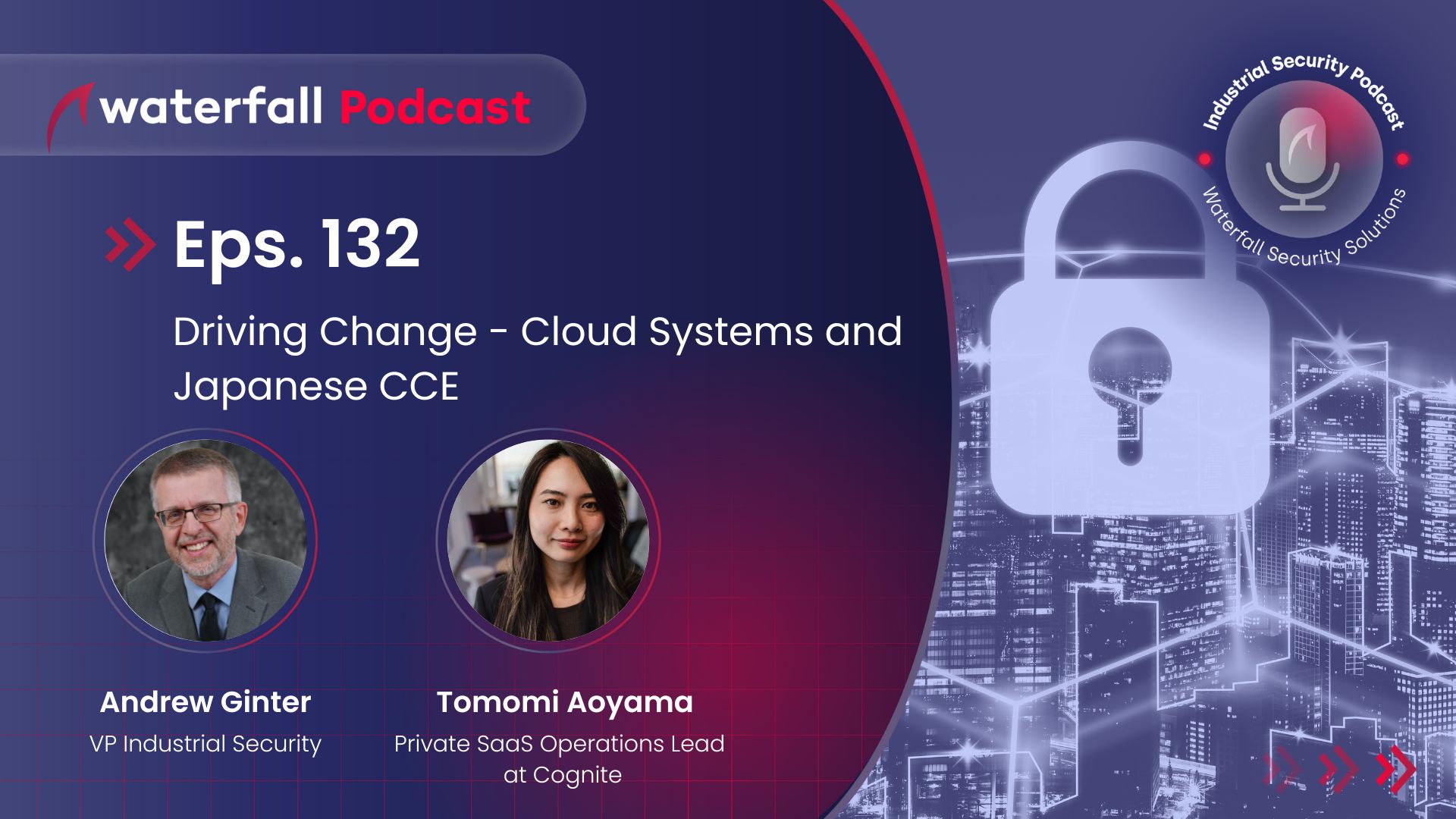
Tomomi Ayoyama translated the book Countering Cyber Sabotage – Consequence-Driven, Cyber-Informed Engineering – to Japanese. Tomomi recalls the effort of translating CCE to Japanese and looks forward to applying CCE and OT security principles to industrial cloud systems at Cognite.
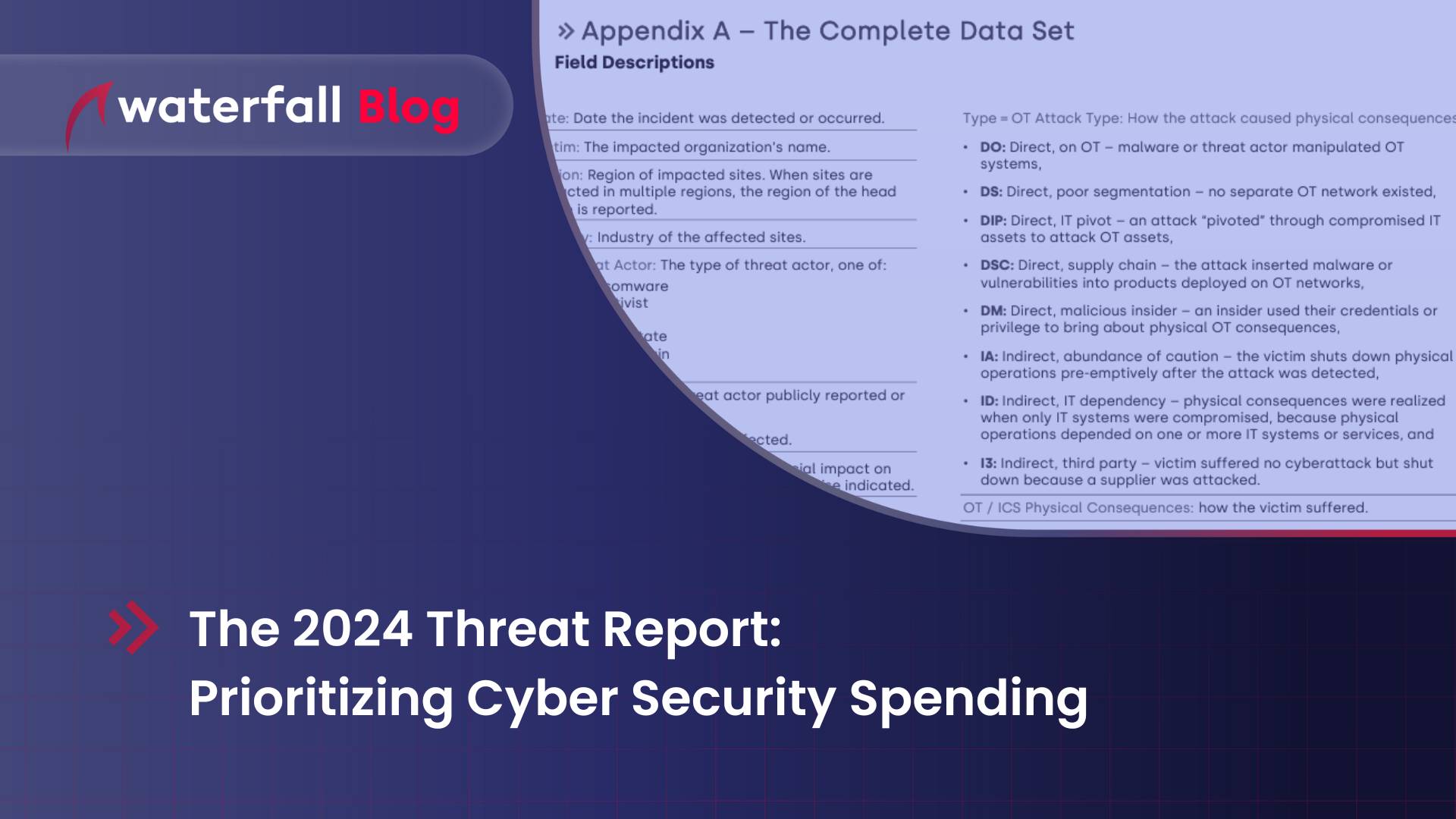
Waterfall’s latest 2024 Threat Report document credible attacks with physical consequences on industrial and critical infrastructures. Credible attacks not only inform defensive designs, but also help prioritize new investments in OT security.
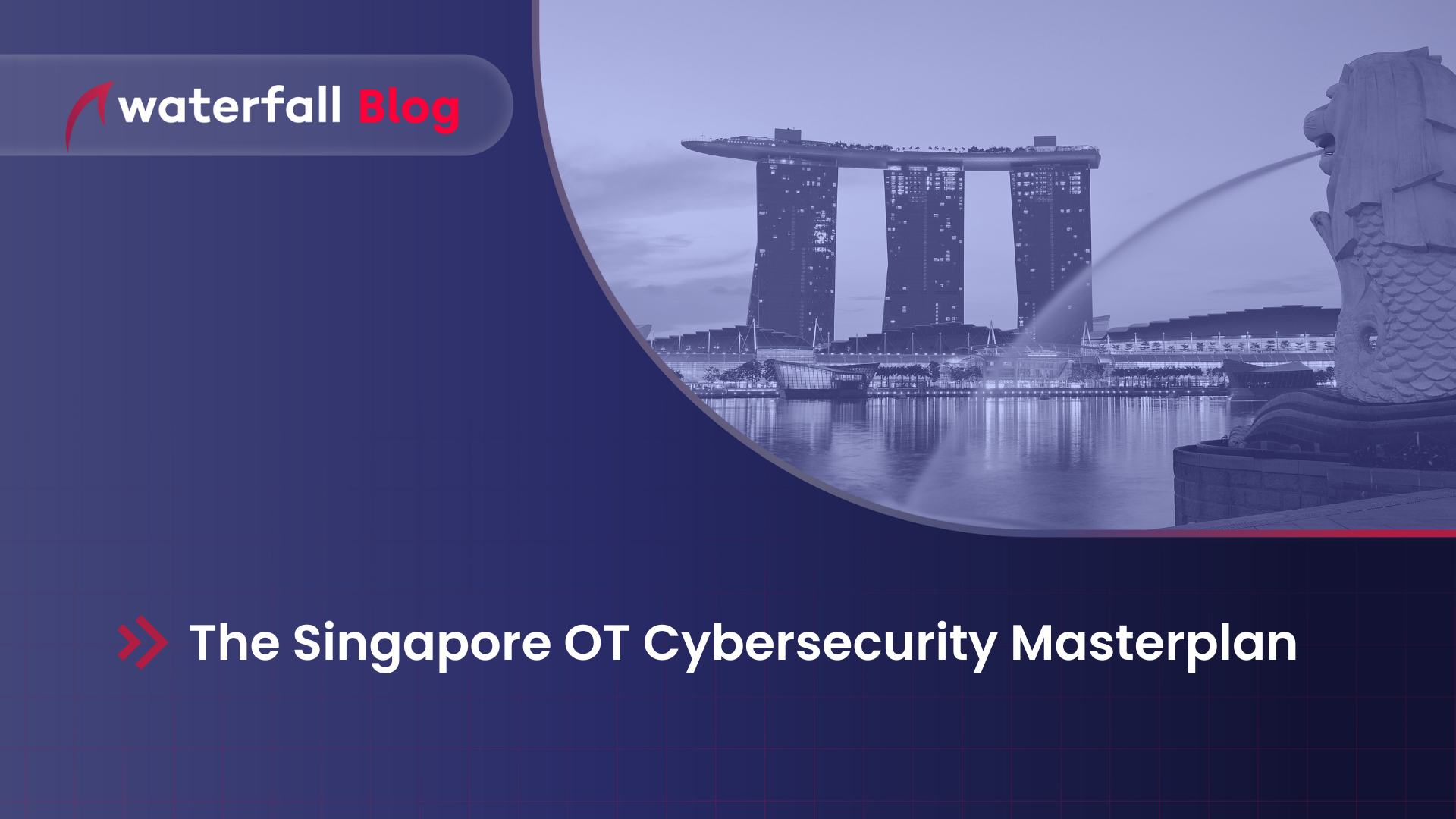
Singapore has set in motion its vision for protecting critical national infrastructure and OT networks with its newly released 2024 OT Cybersecurity Masterplan.